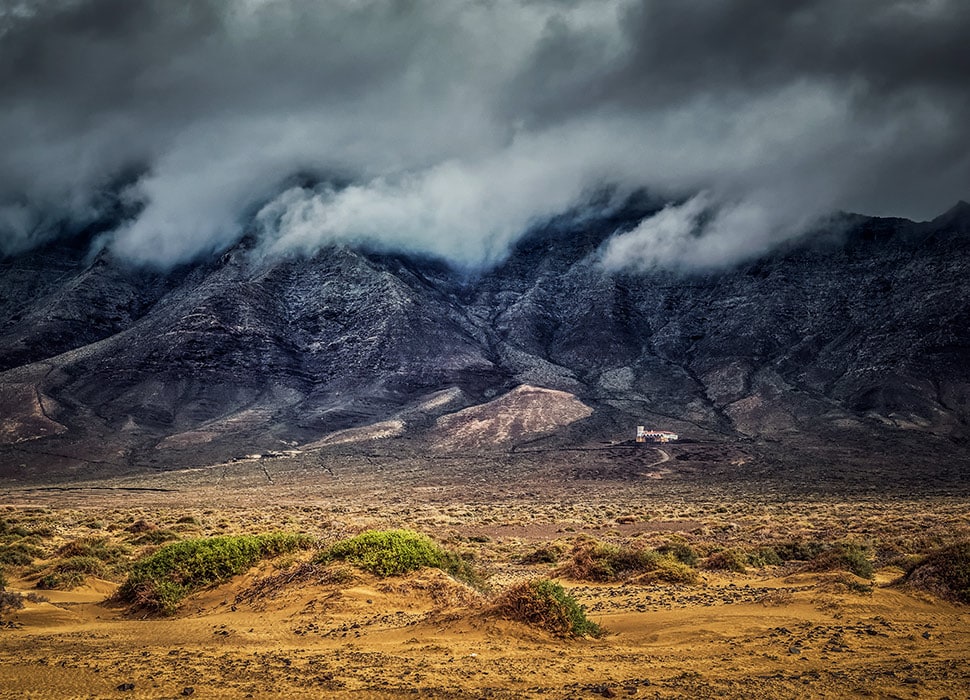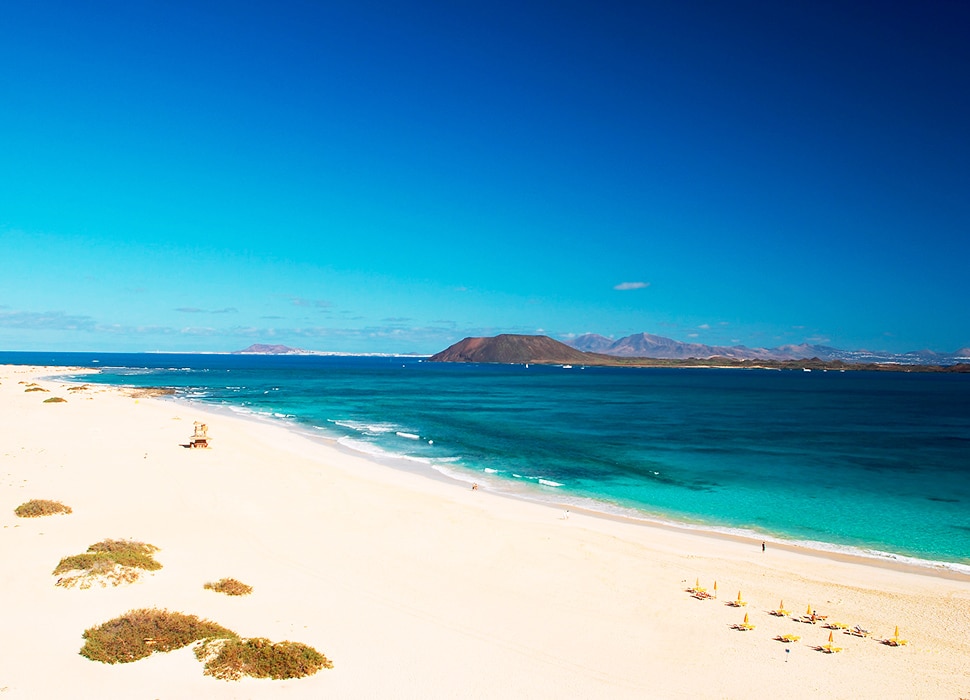When you’ve ticked off everything on this list, re-fuel at one of the best restaurants in Fuerteventura.
And when the food coma kicks in, get your head down at one of the best hotels in Fuerteventura.
The fragrant Museo del Queso Majorero in Antigua
When you’ve ticked off everything on this list, re-fuel at one of the best restaurants in Fuerteventura.
And when the food coma kicks in, get your head down at one of the best hotels in Fuerteventura.

Forget those titchy rock pools you went crabbing in as a nipper. The west coast of Fuerteventura is studded with great craters and stony inlets that fill up with fresh seawater when the tide comes in, making them perfect for having a swim. Better than taking your chances in the moody Atlantic itself, anyway. There’s a good six kilometres of coastal pools to choose from, so you’ll probably find one to yourself. Keep an eye out for the crabs and starfish, be aware of when high tide happens – that’s when you skedaddle – and everything should go swimmingly.
Playa de Santa Inés, Urb. el Cangrejo

Historically, cooking salt was made by allowing seawater into special fenced-off pools called ‘pans’, which were then sealed off from the ocean. The liquid part of the seawater would in time evaporate, leaving behind that precious essential mineral we all love on our fries. See this process for yourself, and learn about the (genuinely) fascinating history and culture of this key maritime hustle, at the Museum de la Sal, a still-working salt panning facility. There’s a full-on whale skeleton, for some reason, and a superb gift shop where you can grab stuff for the kitchen (or even souvenirs, at a pinch).
2 Barrio las Salinas, Salinas del Carmen
museosalinasdelcarmen.es
General entry €6

The 900-or-so acres set aside as a protected area around Fuerteventura’s most spectacular volcanic landscape is poetically referred to as ‘the badlands’ for good reason. It’s a cinematic sweep of swirling, pockmarked lava with precious little evidence of human intervention, centred on the looming 420-metre peak with two craters, and views over to distant Lanzarote. The sheer sun-baked weirdness of the Monumento Natural del Malpaís de La Arena has led to the evolution its own fascinating, beautiful and protected cacti and lichen species. So tread lightly, eh.
FV-10, La Oliva

The best ‘mirador’ – a lovely Spanish word meaning ‘viewing point’ – here is surprisingly seldom visited by tourists. Make your way up the basic stone steps by the road sign and look out for the goat statues, where you’ll see the Fuerteventuran landscape spread out, by day, as if you’d suddenly been transported to Mars. At night it’s even better – renowned as one of the best stargazing spots in the Canary Islands, with pristine vistas of the Milky Way. Fair warning, it’s a trek so check it’s not cloudy. But heaven feels within touching distance on a clear night.
FV-605, Pajara

If you dig tourist attractions with a whiff of history and a soupçon of espionage then strap in. Villa Winter, near Morro Jable, was constructed by one Gustav Winter, a German engineer who reported to Adolf Hitler in the 1930s. In the splendid isolation of his eerie home, complete with brooding round tower and day-and-night Nazi guard, it’s said Gustav got up to nefarious business. Like what? Some say harbouring submarines in the nearby caves. Others more luridly suggest Winter’s home became a makeshift clinic for his fellow Third Reich members to get plastic surgery before going into hiding. It’s pretty – and pretty unnerving. Minibuses go here from Morro Jable.
3 Diseminado, Cofete
villawinter.com

One – disputed – interpretation of the name ‘Fuerteventura’ is that it means ‘strong wind’. It’s certainly a breezy old place, and historically industrious locals have made the most of these brisk conditions by building windmills. Plenty of fine examples are still around, and well worth checking out. The two-storey stone example at Tefia (near the Observatorio Astronómico de Fuerteventura) has six sails and is a model of rustic charm. But if you like your windmills with a quirky twist, a smaller, cuter example with four sails is surrounded by cacti in the grounds of Antigua’s Museo del Queso Majorero (at 1 Diseminado el Molino – and yes, it’s a cheese museum).

It’s a fifteen minute journey by water taxi, and you need to fill out a form (link below). But the tiny islet of Lobos, just across the Bocayna Strait from Corralejo, is perfect for getting away from it all. There are no shops, or shade to speak of, except a modest restaurant. But it’s a pristine habitat for 130 species of flora and birds like the storm petrel and Cory’s shearwater. Recent archaeological finds suggest the Romans used Lobos for smashing snails in order to make purple dye for rich folks – so it’s well worth shelling out €15 for the boat over.

A stretch of shore near Corralejo became a surreal viral hit on Instagram after it was noted that, instead of sand or stones, the beach appeared to be made of popcorn. Alas, it’s actually the accumulated calcium carbonate from the cells of red algae that died on the seabed. When those luckless algae perish, their light, near-spherical shell clusters get washed onto any nearby shore. As impressive as it definitely is, please don’t be tempted to steal any for yourself, as pilfering it carries a hefty fine. Just like real popcorn, it’s best enjoyed in the pictures.
Playa del Bajo de la Burra, between Corralejo and Majanicho

Come for the agreeably surreal spectacle of a dusty field studded with over 1,000 identical, alien-looking succulent aloe plants. Stay for the top-notch products – their hand cream is especially highly sought after, stylishly bottled and packaged in the gift shop – and fact-packed tour. Put it this way, you’ll never again be fobbed off with bland supermarket aloe vera products or spurious commercial claims after you’ve tried the good stuff here. All that, and the staff are super friendly, so drop by any time, even if just to say “aloe”.
Carretera General km 42, FV-2, Fuentita
fincacanarias.es
La Oliva, up in the north of Fuerteventura, is quite the artisan hub, and every Tuesday and Friday between 10am and 2pm its chatty local craftspeople come out on masse to sell their wares at the so-called ‘traditional market’. Nab anything from a dinky souvenir article of costume jewellery, to a stylish embroidered purse. If you’ve got room to spare in your hold luggage they also flog a lovely line in oil paintings, plus all manner of wooden goods, leatherwear and tasty homemade mojo sauce and jam.